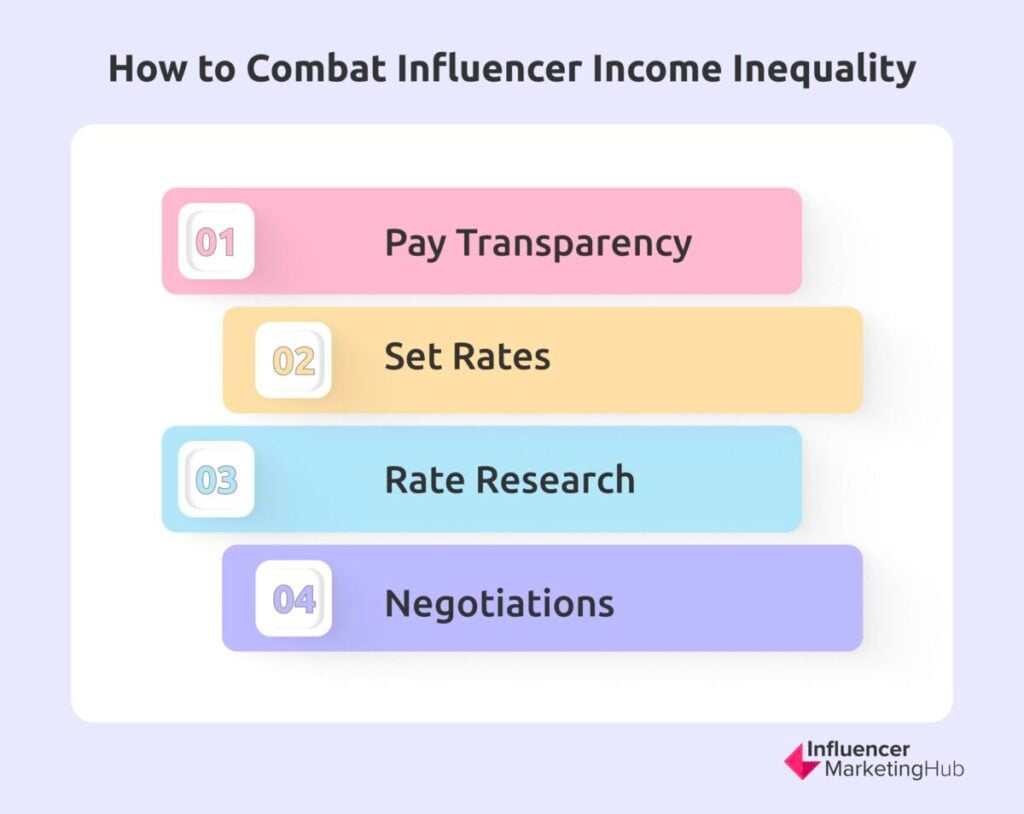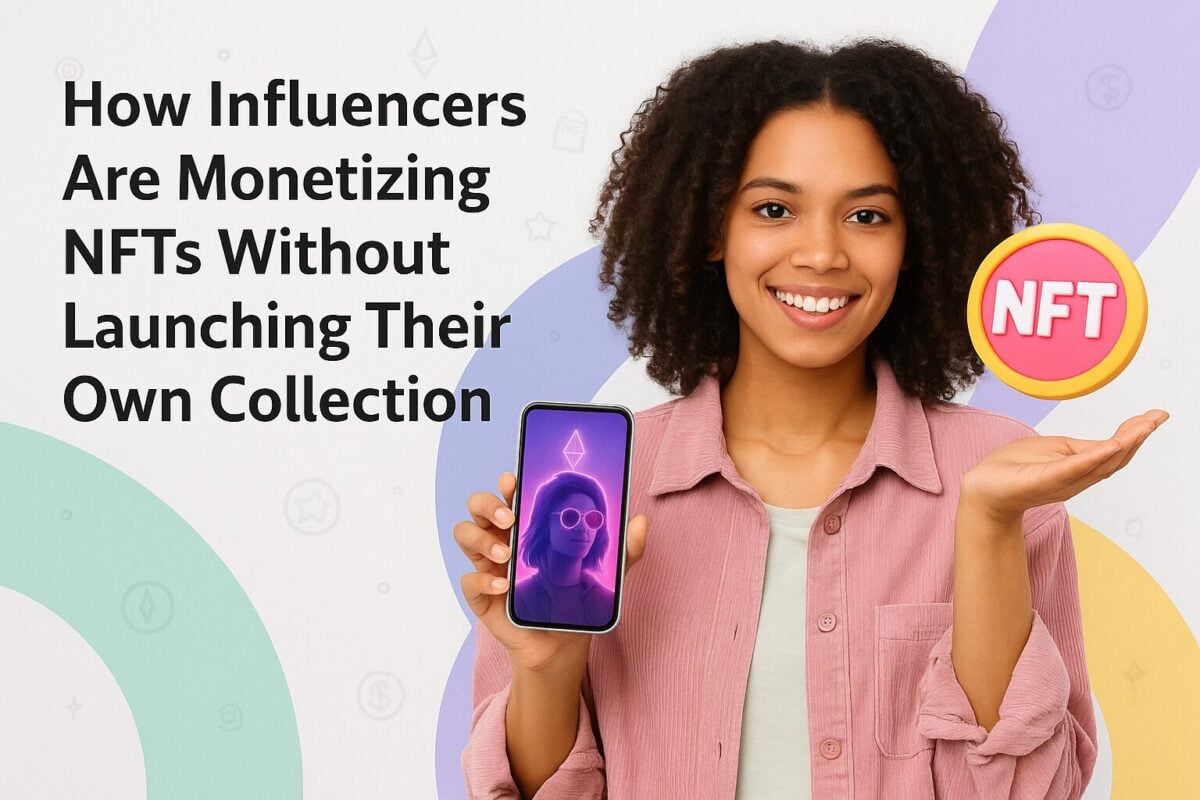Analyzing sponsored posts on Instagram, 84% of them were posted by female influencers while only 16% were posted by male influencers. However, even with the vast majority of influencers being women, we’re still seeing signs of income inequality.
The gender pay gap is nothing new. We recognize Equal Pay Day each year—which is on March 15 next year—as the date symbolizing how far into the next year women have to work in order to earn what men did in the previous year.
But seeing such a pay discrepancy in a heavily female field is unsettling. In fact, one study discovered that male influencers make an average of 30% more per post than female influencers do.
There have been a few different studies that open our eyes to income inequality between male and female influencers. Let’s visit their findings and talk about what we can do to combat this issue.
Average Rates: Male vs. Female Influencers
Influencer analytics platform HypeAuditor was one of the first companies to bring this issue to light with a study they published in early 2020. They conducted a survey of over 1,600 influencers to gather information about average rates across various areas, promo formats, and more.
Another survey conducted in 2022 by influencer marketing software IZEA saw similar results. Their findings showed us that across all social media platforms, men make 30% more than women, charging $2,978 per post compared to $2,289.

Source: izea.com
While this gap has dropped since 2019, it increased from 2020 and has existed for the last seven years.
Influencer CRM Klear also did their own research back in 2019 and 2020 to discover discrepancies in influencer pricing and were shocked to find that there was such a large pay gap between male and female influencers.
They discovered an average $128 difference between the two’s rates, an increase of $20 per post from 2019 to 2020.
Everywhere we look, we’re seeing these same statistics. Some data even dives down deeper to let us know what discrepancies there are with specific types of posts and formats. Let’s take a look.
Instagram Posts
They discovered that of their respondents, male influencers make an average of about 7% more than female influencers for a single sponsored Instagram post.
Male influencers charged $1,411 for the average Instagram post while women charged $1,315. And mega influencers with 100,000 followers and up had a 9% discrepancy, with men charging $2,643 on average and women charging $2,420.
Instagram Stories
When it comes to Instagram stories, the discrepancy was even bigger, with male influencers making 34% more than female influencers. Men charged an average of $809 compared to the $633 that women charged.
We actually saw the opposite with micro-influencers with women making 47% more than men, but then there was a massive jump with men making 92% more.
However, IZEA’s data saw that for the first time ever, women are consistently making more than men for Instagram stories content—potentially due to their high engagement rates.
Multiple Content Types
For sponsored content and promotions including multiple content types, we see the biggest gender pay gap of them all. Men are earning nearly 50% more than women, charging an average of $3,051 to women’s $2,040 for an Instagram post and story, and charging an average of $4,042 to women’s $2,704 for an Instagram post, story, and video.
Why Are We Seeing Gender Income Inequality in Influencers?
First things first, let’s see if we can get to the root of the problem. Is it branding? Level of promotion? Level of work? Or is it just sexism, plain and simple?
Wired tends to lean towards to latter option in their 2019 piece asking why women are called “influencers” while men are called “content creators.” For some, it may be a matter of self-branding. Men prefer to call themselves “digital creators” or “gamers” or whatever industry they’re in.
However, even if a woman prefers not to use the term “influencer,” she still tends to get branded as one. And if she’s streaming video games, she’s referred to as a “female gamer,” rather than just a “gamer.”
According to Wired, “Many men of the internet will fracture their own vertebrae to avoid being called influencers, even when their work—building a brand, getting #sponsored, promoting products and themselves—fits the definition.”
In many full-time jobs, people try to blame the gender pay gap on a number of different things: women opting for less strenuous jobs, taking time off for childcare, not negotiating to the level that men do, etc.
However, these are all rooted in sexism. And in the gig economy, especially in the world of influencers where male and female influencers and content creators are doing the same level of work and promotion for their partners, none of these factors come into play.
Understanding why there’s a gender pay gap—or any income inequality based on race, region, gender, what have you—is the first step in fighting it. And we all need to understand that the common denominator is sexism.
How to Combat Influencer Income Inequality
Any gender pay gap—especially for doing the same job—is unfair discrimination. We should all be looking for ways to minimize this, with the goal eventually to eliminate it completely.
There are a few ways we can all work together to ensure that influencers with the same level of following are getting paid the same for their work.
1. Pay Transparency
At Influencer Marketing Hub, we regularly publish influencer rates for a couple of reasons. First, we want to give companies a realistic idea of what influencer marketing can cost. Second, it helps influencers to see what others with similar followings are charging.
It’s up to other influencers to also be public and transparent about their rates to further combat these levels of inequality. Brands should also be clear with the influencers they partner with on what they typically pay in order to make sure that everyone is getting paid what they deserve.
2. Set Rates
When considering an influencer marketing campaign, set your budget and the rates you have for each influencer (within reason, of course—you’re not going to work with a mega-influencer for $100/post).
Let these influencers know your rate offer ahead of time. Those with rates in line with your offer will happily accept, and it ensures that you’re paying set rates for all of your influencer partners across the board, regardless of gender, location, race, etc.
3. Rate Research
Companies involved in influencer marketing need to continue conducting surveys and doing research into overall influencer rates. By understanding how bad the problem is, we can start to create solutions.
Revisiting these surveys each year can also help see if the gender pay gap in influencers is closing or if there’s still more work to be done.
4. Negotiations
Influencers and content creators should always be encouraged to negotiate. Really, anyone looking for work should be encouraged to negotiate and provided with resources to aid in those negotiations.
Strong negotiation skills help people make more—and in this instance, it can help female influencers learn how to negotiate better so that they’re making the same as their male counterparts.
Help the Fight Against Influencer Income Inequality
Knowing there’s a problem is the first step in stopping it. Make sure you’re paying your influencers equally based on their level of following. Keep the conversation about pay open amongst influencers. And keep an eye on the state of influencer marketing to see if our efforts are paying off.
Frequently Asked Questions
How much do influencers make?
Influencer income is heavily based on how large their following is. This is because rates are directly correlated to the amount of reach and engagement a company can expect to get from a partnership.
Rates typically fall in these ranges:
- Nano-influencers: $10-100 per Instagram post
- Micro-influencers: $100-500 per Instagram post
- Macro-influencers: $5,000-10,000 per Instagram post
- Mega or celebrity influencers: $10,000+ per Instagram post
Learn even more about standard influencer rates based on platform and content type here.
How much do male influencers make?
Male influencers’ income is also based on the size of their following and their overall reach, engagement, and impressions. However, studies show that they make anywhere from 10-50% more than female influencers depending on the type of content they’re creating.
How many influencers are women?
Approximately 84% of influencers are women, compared to just 16% of male influencers.
Do men or women use Instagram more?
50.7% of Instagram users are men and 49.3% are women. Essentially, there’s almost an even split of male and female users, with male users slightly in the lead.
How much money can you make as an influencer?
When just starting out, you might be hard-pressed to make more than $10-50 per post. However, you can start to charge hundreds or thousands of dollars for each post you create as you grow your audience.









